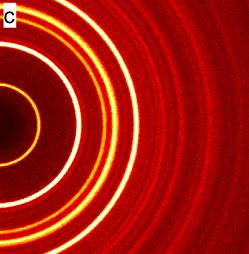Prove me wrong, please?
edit: thanks for all the great comments, this is really helpful. My main take-away is that it does work, but requires dry air. In humid conditions it doesn’t really do anything.
Spouse bought this thing that claims to cool the air by blowing across some moist pads. It’s about as large as a toaster, and it has a small water tank on the side. The water drips onto the bottom of the device, where it is soaked up by a sort of filter. A fan blows air through the filter.
- Spouse insists that the AIR gets cooled by evaporation.
- I say the FILTER gets cooled by evaporation.
- Spouse says the cooled filter then cools the air, so it works.
- I say the evaporation pulls heat (and water) from the filter, so the output is actually air that is both warmer and wetter than the input air. That’s not A/C, that’s a sauna. (Let’s ignore the microscopic amount of heat generated by the cheap Chinese fan.)
By my reckoning, the only way to cool a ROOM is to transport the heat outside. This does not do that.
We can cool OURSELVES by letting a regular fan blow on us = WE are the moist filter, and the evaporation of our sweat cools us. One could argue that the slightly more humid air from this device has a better heat transfer capacity than drier air, but still, it is easier to sweat away heat in dry air than in humid air.
Am I crazy? I welcome your judgment!
I think that the evaporation in theory is able to cool the room, the heat energy is transferred into launching a bunch of water molecules airborne so to speak. Hanging some wet towels around would also do that.
However, the performance of such small devices is probably not sufficient to significantly cool a room, and it has a lot of drawbacks (filter gets mouldy easily, …)
Here’s an excellent video about these swamp coolers: https://youtu.be/2horH-IeurA (he has many videos on heat pumps and stuff)
Aw. I was going to post the link to his video, but you beat me to it.
But yeah, Technology Connections makes some excellent and informative videos. To anyone else who sees this: If heat pumps, refrigeration, or climate control technology aren’t your cup of tea, he also covers older technology based around electromechanical designs (as in, pre-dating microcontrollers and programmable logic) and analog media recording devices.
I mean even if they aren’t your thing you should check out his videos.
I remember watching a 20 or so min video on an antique toaster and since then I’m also pissed at the inferior toasters of today.
His videos are gold.
Can someone please explain why toasters aren’t made like that anymore?? I would happily forgo the led and the obnoxious ding they make to have them make the toast perfectly every time
It’s cheaper to make a shitty time based solution.
That may have been my intro video to him. Can’t go wrong with any topic, no matter how trivial it may sound. You will come back afterwards saying, wow, never knew that.
, and it has a lot of drawbacks (filter gets mouldy easily, …)
The more immediate drawback is after running it for a little bit, you’ll lose the ability to sweat.
Well, you’ll still sweat, it just won’t evaporate due to high humidity.
It’s at best a very short term solution before it starts making it worse
Plus if you have AC then the AC has to dehumidify the air first before it can cool it.
That isn’t how AC’s work. They work by using the fact that a phase change between a liquid and a gas is endothermic. It turns a refrigerant into a gas and that sucks heat from the air in your house and then pumps that gas outside to cool off with your compressor, moving heat outside. (Someone correct me please if I got details wrong). The act of pulling that heat from the air into the phase change cools down air and water condenses out of the air, dehumidifying it. Fun fact AC’s weren’t designed for our comfort, some facrory needed less humid air for their product, us lazy workers cooling down a little is a side effect.
The cooler air converts the water from a gas to a liquid which generates heat. The more water in the air the more heat gets generated. You don’t really get as cool of air until the air has been dehumidified.
Unless you are in a dry climate. Our house is cooled almost entirely off of a swamp cooler (small window unit for the bedroom) and the humidity is never noticeably high.
Gotta live in a desert for that. If not yeah swamp coolers are very limited.
Immediately knew which YouTuber you linked to when you said heat pump 😂
Swamp coolers are a thing. I don’t know about the physics, but they can actually cool a space if the ambient humidity is low.
Using ice water in the gadget you have will improve its performance, obviously.
swamp coolers work through evaporation cooling. the water absorbs some energy from the air as it evaporates. (essentially the water gets hotter, the air gets cooler.)
Too add to that, slot of that energy goes into vaporizing the water, so the average temperature is lower.
it’s not technically a net loss- some of that energy is lost as it escapes the system, but conservation of energy generally means that as the air cools down, the water gets warmer. it’s just that the water has extremely excellent thermal mass, meaning that the air appears to cool much more than the water gains heat. This is especially true if the water itself is cold to begin with. (ie, blowing it over ice cubes.)
This is not the dominant factor, and this system will still work even if the water is warmer than room temperature. The primary energy sink is the vaporization of water.
Vaporizing 1g of water takes 2257 Joules. https://en.wikipedia.org/wiki/Enthalpy_of_vaporization
The water does not change temperature during that process.
Heating 1 g of water 1C takes 4.184 J. To heat it from from 0C to 25C (about freezing to room temp) it thus takes104.6 J, much less than the 2257 Joules required to vaporize it. These numbers could be modified to properly account for the variace with temp, but the effect actually gets larger then I believe.
No energy leaves the system; it goes into changing the state of water and is stored in the water.
That’s a swamp cooler and is very commonly used in dry environments. It will help a lot in Arizona (well, maybe not that tiny thing, but a properly sized one) and not at all in Miami, due to the difference in ambient humidity.
It’s not AC, it’s called a “Swamp Cooler”, and yeah, it will work for a limited time, to a small degree, especially in dry conditions.
It’s like setting up a fan to blow across a block of ice, yeah, it works until the ice melts.
https://www.nytimes.com/wirecutter/blog/do-swamp-coolers-work/
It’s not really like that. As long as you have a limitless supply of dry air, and a limitless supply of water, it will work indefinitely. If you seal the room, you will eventually hit 100% humidity. If you run out of water, well that’s the end of that. But if you don’t, then you will get cooling that is the result of water phase changing from a liquid to a gas. With a small unit you won’t cool a room, but it will feel nice blowing on you, and it will be cooler than a fan. How much cooler I can’t say. I wouldn’t personally bother with a small unit like this.
It is a swamp cooler. It works, and works better in drier air, but it is not a heat exchanger. Most of the cooling is gonna be from the moving air.
Technology Connections has a video on exactly these devices that dives into how they work and what they can and can’t do. TLDW; you’re not wrong about the physics of cooling a room, though in some cases this little thing might make you feel a bit cooler.
Here is an alternative Piped link(s): https://piped.video/watch?v=2horH-IeurA&pp=ygUddGVjaG5vbG9neSBjb25uZWN0aW9ucyBjb29sZXI
Piped is a privacy-respecting open-source alternative frontend to YouTube.
I’m open-source, check me out at GitHub.
I was about to share this! Always glad to see Alec get recognition!
Swamp cooler, they do work, but raise the humidity, which might cause increased mold growth
It’s been crazy hot and humid this past month where I live. This thing would kill me
It’s evaporative cooling. Grew up with them. They’re great. They aren’t A/C. They don’t worm when it too humid.
Great for dry desert geography.
deleted by creator
OP, where do you live? What is the surrent relative humidity of your house? The lower it is the more likely this thing is to work. It is a legitimate technology but they only work well in dryer places. A dry heat is perfect for this.
These are often called swamp coolers.
swampies down under mate
The issue here is that your wife bought this thinking it’s an ac when it’s an evaporative cooler aka swamp cooler. They do work if you have low humidity. If you are in a humid area this definitely won’t work. Since the unit is small it won’t cool the entire room but she should feel nice and cool about 3 to 5 feet in front of it. She will need to make sure the wicking action is working to get the pads nice and wet, otherwise she will have to manually remove them to wet them.
Edit: I wanted to add that I have had a similar small unit before which is why I know that she needs to be 3 to 5 feet in front of it to hit the little target cool zone.
These work so long as the air around them is not humid already
Well, what this thing doe is moisten the air and thereby cooling it. So temperature down, humidity up.
If you live in dry areas, this is good, but if you live in more humid areas, this will only worsen the problem.
Don’t forget to air the rooms regularly (at night, if it is too hot during the day) to get the humidity out again - you don’t want to get over 60% relative humidity for a longer period.
Large versions of these are often used in greenhouses for temperature control, so they do in fact work as advertised.
Water is very good at absorbing thermal energy, far better than air. The moist pads are drawing thermal energy out of the air and storing it in the water, reducing the air temperature. Some water eventually evaporates, but in a gaseous state this water still retains the thermal energy it absorbed from the air, causing a noticeable decrease in air temperature, as well as a slight increase in humidity.
Put a very dry cloth in front of the cooler to trap water vapor, every now and again relocate the now damp cloth outside of the room being cooled, and replace it with a fresh dry cloth.
On point 4, the key part that you are missing is that evaporation /takes/ energy. The standard central air works closer to how you are thinking by the evaporator above your furnace taking heat to then be dumped out by the condenser outside. This is necessary because it is a closed system that must continually reuse the refrigerant.
Sweat, and the swamp cooler you have here, are not closed systems and therefore don’t have to “dump” heat. Energy was transferred to the water molecules to cause them to evaporate. As latent heat exists (Google this if you are still confused) the heat energy has been transferred to “evaporation” energy and so the heat can be reduced without breaking any thermal laws.
Basically the water on your skin or in the swamp cooler is like a wall that heat has to break down. The heat can do this, and does get through but has been reduced by the work and is therefore less strong (lower temperature.
There was no subtraction or addition to total energy when you look at the whole process. Heat energy was transferred to kinetic energy to cause the state change of the water.
Central AC has to dump heat to reuse the refrigerant. The swamp cooler doesn’t have to dump heat but needs to be refilled often as the evaporation of water takes matter away from the system.













